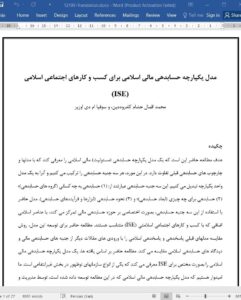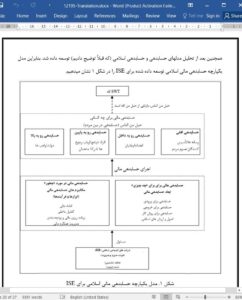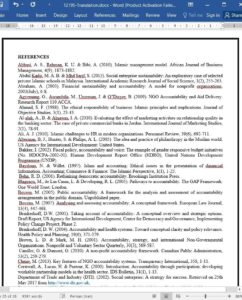ABSTRACT
This study aims to present an integrated Islamic financial accountability model, which is different from previous accountability models and frameworks. In this case, all three accountability aspects which are: (i) accountability to whom (accountability groups); (ii) accountability for what (accountability dimensions); and (iii) accountability on how (accountability tools and processes) were integrated into a single model. By using these three accountability aspects, this model is specifically focused on financial accountability area with additional Islamic elements that suits Islamic Social Enterprise (ISE). In order to develop this model, this study applies the comparison method on previous accountability and Islamic accountability models with additional literature inputs from financial accountability aspects and Islamic accountability perspectives. Based on the findings, this study introduces an integrated Islamic financial accountability model specifically for ISE, one of the emerging institution types under the non-profit sector. It is hoped that the integrated Islamic financial accountability model developed in this study will be implemented by the management of ISE in order to discharge their accountability especially to donors, beneficiaries and other stakeholders.
INTRODUCTION
Accountability is one of the crucial elements for non-profit organisations. This is because accountability is closely related to responsibilities of non-profit organisations including Islamic social enterprise (ISE) to their stakeholders such as donors, beneficiaries and public. In other word, accountability is a cycle of relationship between ISE stakeholders (principal) and ISE board of directors (BOD) and management (agent). In this case, ISE stakeholders are continuously demanding the information from and supplying the resources needed by ISE BOD and management. While, ISE BOD and management are continuously demanding the resources and supplying the information needed by ISE stakeholders.
CONCLUSION
A good financial management practices could be one of the mechanisms for a good financial accountability practices in order to ensure the effectiveness and the efficiency of Islamic non-profit organisations especially in relation to financial aspects. This study presents a new Islamic financial accountability model that emphasise financial aspects from Islamic perspectives such as amanah (trust) and khilafah (power) concepts. These two concepts are entrusted upon ISE BOD and management to ensure that all activities and actions taken in financial matters are in good practices. In addition, this new integrated Islamic financial accountability model also adopted dual Islamic accountability which are hablum minallah (accountability to Allah) and hablum minannas (accountability among people). By implementing this model, it is hoped that ISE will be able to discharge its Islamic financial accountability through financial management mechanisms by focusing on several suggested accountability dimensions towards specific accountability groups.











